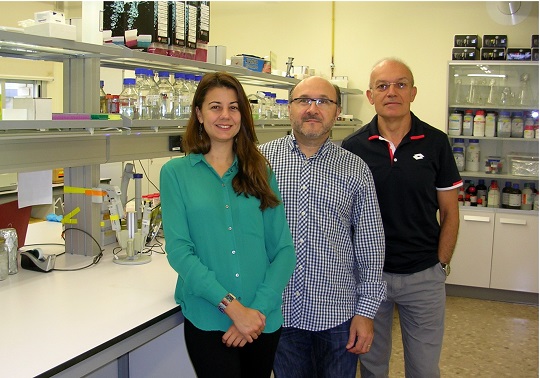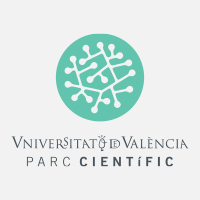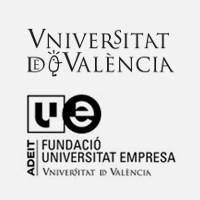
The Yeast Functional Genomics research group (GFL) of the Universitat de València has discovered that when a cell divides into two of different size (asymmetric division), a problem is generated in the distribution of some cellular components that are not given in cells that are symmetrically divided. The paper, published in the journal “Nucleic Acids Research”, also concludes that brewer's yeast has solved this evolutionary situation by modifying the amounts it generates from an enzyme.
The paper, directed by José Enrique Pérez, a researcher in the Department of Biochemistry and Molecular Biology at the Faculty of Biological Sciences, have had the copperation of the group of Sebastián Chávez (University of Seville) and Abhi Singh (University of Delaware).
The research shows that in cellular division, the distribution of most of the components between daughter cells can be carried out equally according to the size of each resulting cell. However, in the case of genoma distribution, it is unavoidable to give the same amount to each daughter cell. This fact creates an asymmetry in the ratio of quantities between the genome and the rest of the cellular components.
After using brewer’s yeast (Saccharomyces cerevisiae), which has an asymmetric division by budding, as a working model, researchers have found that this problem could lead to a catastrophic mismatch in some molecular processes incompatible with the survival of the species. Budding is a type of asexual reproduction characterized by the fact that the stem cell originates two daughter cells of different dimensions, even though the nucleus is divided by mitosis into two equal parts.
The research show thus, that this yeast has modified its control over its overall amount of enzymes that synthesize ribonucleic acid (RNA), RNA polymerases, to avoid the detrimental excess that would occur in smaller daughter cells if they followed the usual strategy of cells with symmetric division.
“In this way it can be stated that evolution has shaped in a different way the global regulation of RNA synthesis in cells with symmetric or asymmetric division to fit each one to their needs," explains José Enrique Pérez. The expert adds that the team believes that this results can be extrapolated to eukaryotic cells with asymetric divison, as it is the case of some stem cells in humans”
Research group
Yeast Functional Genomics reasearch group (leaded by José Enrique Pérez y Paula Alepuz) of the Department of Biochemistry and of the Molecular Biology and IBIOTECMED Interdisciplinary Research Structure of the Universitat de València, has been working on methodologies to quantitatively determine the rates transcription and degradation of messenger RNA (mRNA) molecules at the genomic scale. The line of research focuses on the study of the mechanisms of genetic regulation, using the yeast Saccharomyces cerevisiae as an experimental model. The published paper has been financed with benefits from MiNECO (National plan, excellence programme) and the Regional Ministry of Education (Prometed Programme).
Article
Adriana Mena, Daniel A. Medina, José García-Martínez, Victoria Begley, Abhyudai Singh, Sebastián Chávez, Mari C. Muñoz-Centeno i José E. Pérez-Ortín. «Asymmetric cell division requires specific mechanisms for adjusting global transcription». Nucleic Acids Research. Published 23 october 2017. DOI: https://doi.org/10.1093/nar/gkx974



























